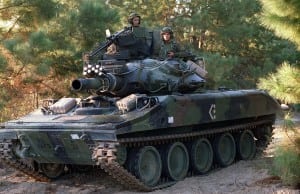
The Army is in the market for a new light tank to accompany infantry brigades into combat and the service is not prepared to wait around during a protracted development program.A contract award for Mobile Protected Firepower (MPF) should occur this time next year and the winning vehicle manufacturer or industry team is expected to deliver vehicles within 15 months of that date, according to Maj. Gen. David Bassett, program executive office for Ground Combat Systems (PEO GCS).“Everybody can talk…

 By
By 











